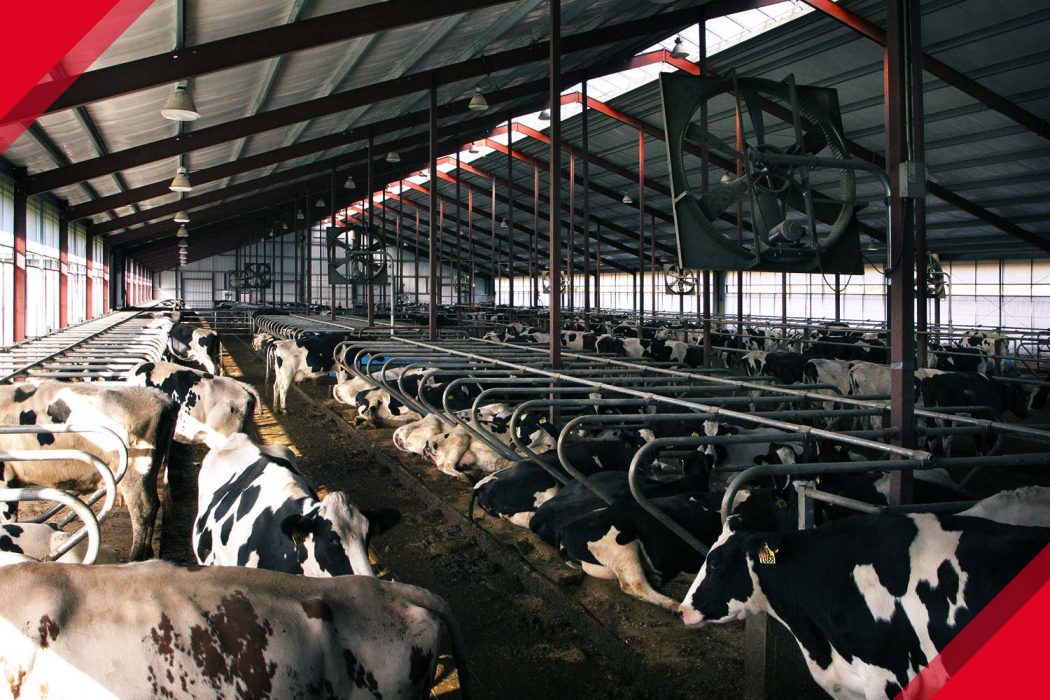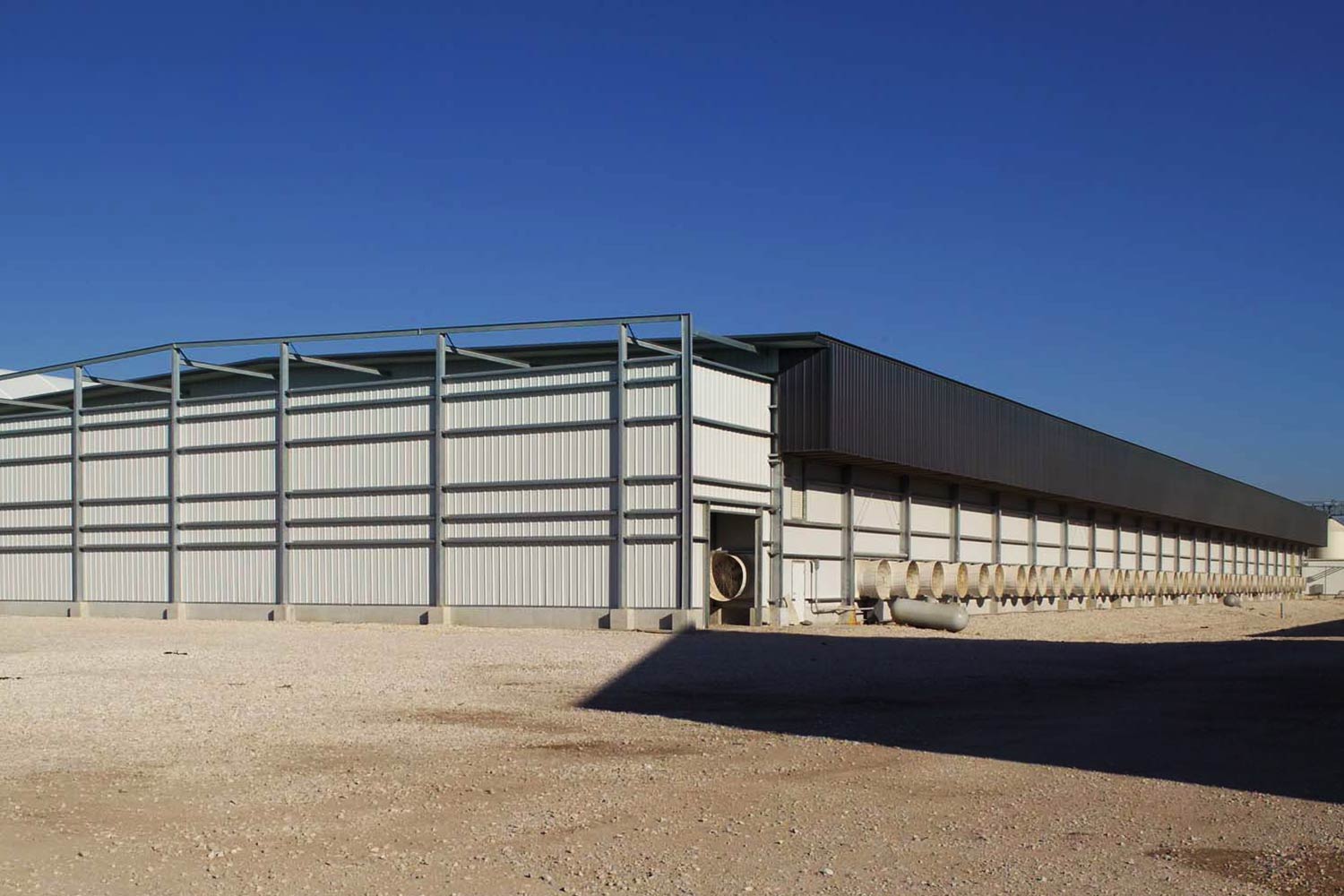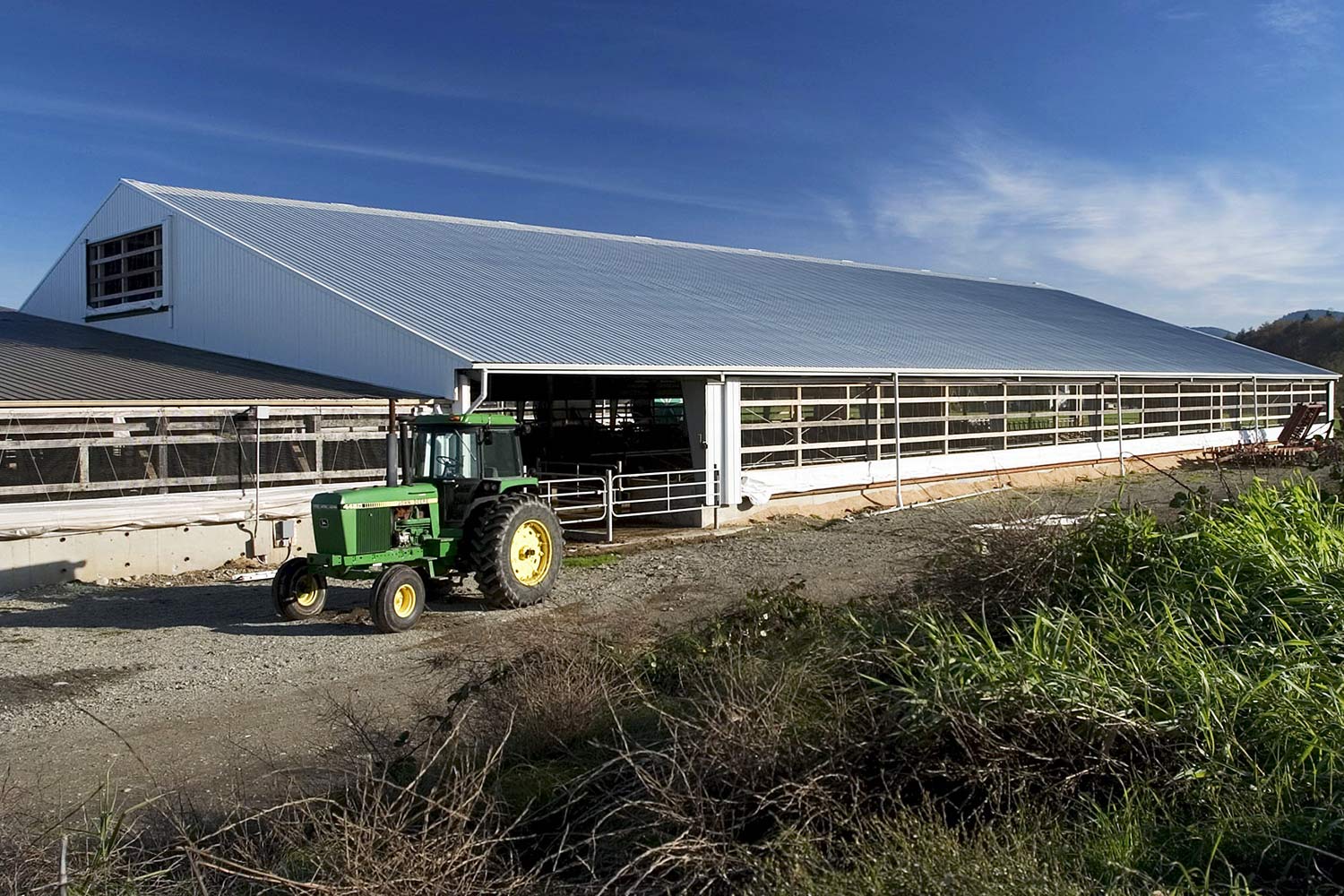August 8, 2018
by Star Building Systems

Housing livestock can be a challenge to the integrity of a building. The animal waste creates a highly aggressive environment, fostering corrosion that can damage steel wall and roof panels, and even structural steel. That challenge can be met successfully, however, by a combination of smart design and the correct corrosion-resistant materials.
The chief threat in cattle barns is the ammonia in the animal waste. It’s not only on the ground where it falls; it also evaporates, permeating the air inside the building. It has the potential to rust unprotected steel in a few short years unless it is handled properly.
Matt Redlin of Landmark Builders, a Star builder in Watertown SD, says the key is ventilation. “You need to have airflow.”
His part of the country sees a great deal of livestock facilities. Many of the cattle barns are constructed in an unusual way, specifically designed to address the need for strong ventilation. These buildings consist of a 4-6 foot high concrete stem walls, with a metal building system mounted on top of it. The walls of the steel structure are not closed with metal panels or any other hard cladding. Instead, they have vinyl curtains that can be fully or partially closed, or fully opened, extending from the top of the concrete stem wall up to the edge of the roof.

The roof itself is made of metal panels. Gabled roofs have a ventilation opening about one foot wide at the ridge. Single slopes vent out the high side or low side, depending on wind direction. Ammonia vapor rising from the manure on the floor mixes with air coming in the open sides of the building, and vents out the top. The roof panels are G-90 galvanized and sometimes painted.
“In winter time,” says Redlin, “they’ll have the curtains closed, but they keep the top curtain open 12-18 inches at all times, except in case of a storm. All the ammonia gas coming off the manure will go up and out.” Redlin adds that the success of this strategy depends partly on the producer and how well he manages the building. “The producers that leave it shut all the time, there’s no air going across it, for ventilation, and that’s more susceptible to corrosion.”
Choice of materials is also important. Although much of the metal building industry has embraced panels with zinc-aluminum coatings (such as Galvalume coating) for many applications, Star is finding that livestock buildings are more durable with straight zinc galvanized or pre-galvanized materials.

For housing chickens, metal building systems are being clad in insulated metal panels (IMPs) with excellent results. IMP’s with 3-4 inches of built-in insulation help retain heat necessary to support fowl in climates like Iowa and North Dakota. Some of these are extremely large buildings – almost 1,000 feet long – with conveyor belts that carry the eggs out. Again, galvanized rather than zinc-aluminum coatings are recommended. These buildings often employ an “inside-out” structure sometimes referred to as an exoskeleton design, where the tapered structural steel columns point outwards, and the wall panels are installed on the inside of the columns. This presents a completely smooth interior wall that is easier to keep clean, minimizing chemical attack by animal waste.
While most buildings in the world are designed to keep exterior elements out, these buildings also need to be sealed against interior moisture and corrosive vapors. Often, the laps of the roof panels are sealed not only on the topside, but on the underside as well, so that nothing gets into the joints that could promote deterioration.
Matt Redlin adds that on cattle and dairy buildings, where the steel structural faces inwards, a select few owners are getting the underside of the structural steel painted, also, for extra protection.
With a design that addresses the problem and smart management, these buildings survive and perform, despite some of the most aggressive conditions.
Become part of the powerful Star network. We invest in builders who understand the value of results and provide support that develops strong relationships between you and the entire Star team.
Your building is the cornerstone of the community where people live, work and play. Find a local Star Authorized Builder and let us help you bring your vision to life.